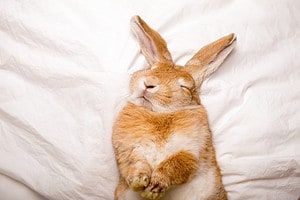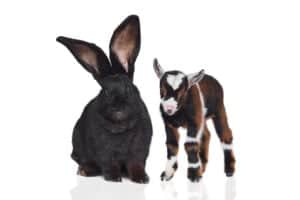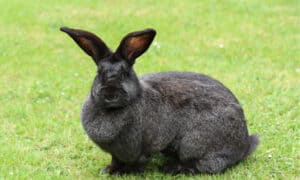Rabbits are well known for their prominent buck teeth. They may be small, and reminiscent of other big toothed creatures like hamsters and guinea pigs, but they’re not rodents. Rabbits are actually lagomorphs from the Leporidae family, and people have been keeping them as livestock since the Middle Ages.
Rabbits were first domesticated, not as pets, but as sources of meat and fur, in Europe hundreds of years ago. Today, they are still kept as livestock, but are far more popular as cute, furry pets. Here, we’ll discover everything you ever wanted to know about rabbit teeth, and how to ensure that your pet rabbit keeps its pearly whites healthy and strong.
What’s Special About Rabbit Teeth?
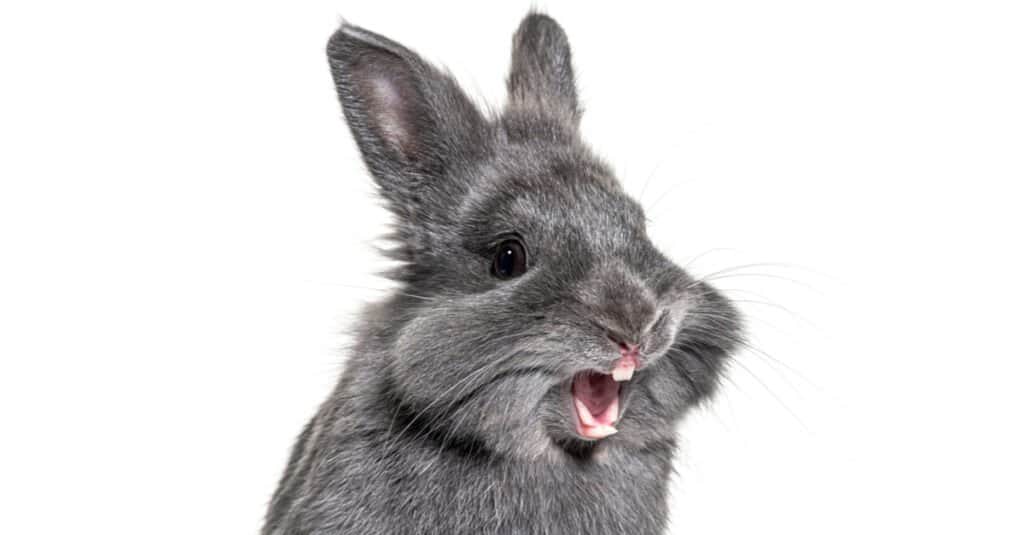
Rabbits have 28 teeth; six incisors and 22 cheek teeth
©Eric Isselee/Shutterstock.com
Rabbits are heterodonts, which means they have more than one type of tooth. They’re also hypsodonts, meaning their back teeth have high crowns for chewing. But on top of that, rabbits have one tooth peculiarity that allows their teeth to keep growing as long as they live.
Rabbits are elodonts, which means their teeth continuously grow for their entire lives. Moreover, their teeth are aradicular. Aradicular teeth don’t have true roots, and the tooth enamel actually develops below the gumline. This means that, in rabbits, their teeth are exactly the same below the gumline as they are above the gums; a rarity in the animal kingdom.
How Many Teeth Do Rabbits Have?
Rabbits are herbivorous grazers; they spend much of their lives chewing. Because of this, they need reliable teeth. They’ve got plenty of them too; 28 to be exact. Their teeth can be divided into; incisors, premolars, and molars–though the premolars and molars are identical and are almost always generalized as ‘cheek teeth’.
Incisors
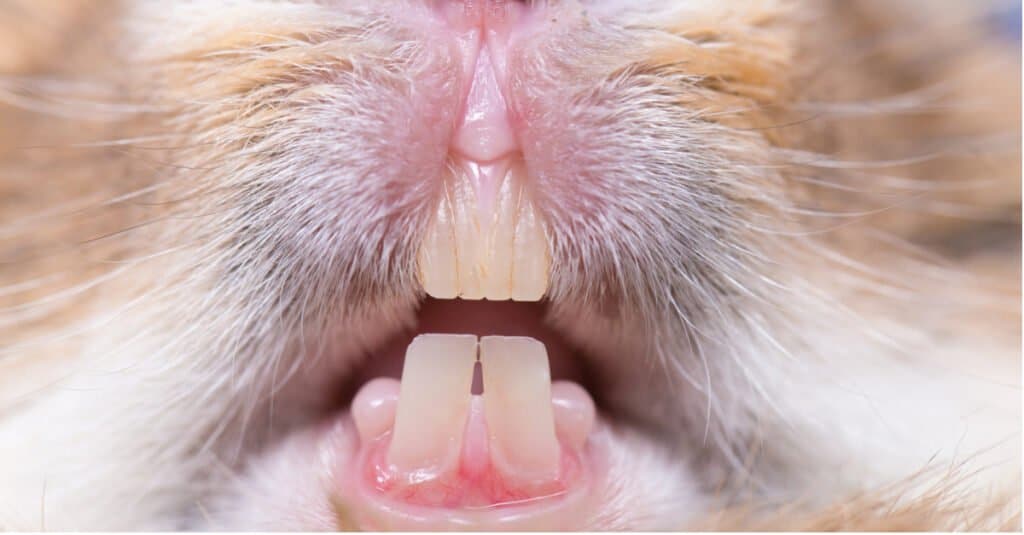
Rabbits have six incisor teeth
©Roselynne/Shutterstock.com
Rabbits are unique among small grazers in that they have six incisors; two on the bottom, and four on the top. Their bottom (mandibular) incisors are longer than their top (maxillary) incisors, and when their mouths are shut–their bottom incisors rest behind the top ones. The front maxillary incisors (the famous buck teeth) have a groove running down the middle, from top to bottom.
Behind the maxillary incisors are two additional incisors called ‘peg teeth’. These incisors are much smaller, and when the mouth is shut, the mandibular incisors rest against them.
Cheek Teeth
Rabbits have a total of 22 cheek teeth; ten on the bottom, and twelve on top. The bottom part of their jaw (mandible) is wider than the top part (maxilla). Because of this, the top and bottom cheek teeth don’t actually touch when the rabbit closes its mouth. This is why, when rabbits chew, they grind their teeth from side to side, rather than up and down. The chewing (occlusal) surfaces of the cheek teeth are irregular, and when the rabbit chews, its food is masticated and pulped over these irregular ridges.
Why Are Rabbits’ Teeth So Big?
Just why are rabbits’ front teeth so prominent? Well, the answer is simpler than you think.
Rabbits are grazers. In the wild, they eat grass, hay, and high fiber plants. In order to get these plants into their mouths, they have to be able to bite them off. That’s where the chisel shaped incisors come in.
Rabbits have large incisors for biting off tough plants. Once they’ve bitten the greens off, they use their tongues to move them into the back of their mouth. From there the cheek teeth take over, chewing and rechewing the food until its smooth enough to swallow. Without large incisors, rabbits would never be able to chop off their food and get it into their mouths.
Dental Problems
Because rabbits have such specialized teeth, they are especially prone to dental problems. This is particularly true when it comes to pet rabbits, who may be born with dental deformities (congenital), sustain injuries, or develop ‘bad’ teeth through improper nutrition. Let’s take a look at some of the most common maladies that befall bunny teeth, what owners can do to prevent dental issues, and what can be done once a problem has arisen.
Misalignment
The most common health issues in pet rabbits come from dental problems. Teeth, especially the incisors, can become misaligned from injury or improper diet. Rabbits are especially prone to broken teeth, as well as broken jaws. If these injuries are not treated, or are improperly treated, the teeth may grow back at the wrong angle, causing a misalignment. Misalignments can be extremely dangerous to the health of the rabbit, if left untreated. However, if misalignments are caught early, veterinarians may be able to correct them through filing or surgical procedures.
Teeth can also become misaligned due to overgrowth. Overgrowth is largely preventable through proper diet, but trauma or congenital defects may cause misalignment or overgrowth despite proper feeding.
Overgrowth

Overgrowth of rabbit teeth can become a serious problem if not properly cared for.
©pruit phatsrivong/Shutterstock.com
In the wild, rabbits rarely suffer from tooth overgrowth because they spend so much of their time eating. They also have few food options outside of their normal diet. Pet and livestock rabbits however are at risk of overgrown incisors and cheek teeth if they are not fed the proper diet. Cheek teeth can become so overgrown that they actually entrap the rabbit’s tongue, making feeding difficult or even impossible.
To prevent overgrown teeth, rabbits need an unlimited supply of hay, grass, or alfalfa to chew on. They need very few other foods, though they can be supplemented with rabbit pellets or vegetables. These foods should be given sparingly though, and rabbits do not need to be fed any type of grain. These types of foods promote an incorrect up and down chewing motion, rather than the normal side to side chewing motion that rabbits utilize when masticating grass.
Rabbits with overgrown teeth often display few physical signs. Owners should watch for decreased appetite, lethargy, food falling from mouth, weight loss, drooling, decreased grooming, nasal discharge, reduced defecation, swelling, or tooth grinding. If you suspect that your rabbit may have overgrown or misaligned teeth, it’s important to consult a veterinary specialist immediately.
The photo featured at the top of this post is © Eric Isselee/Shutterstock.com
Thank you for reading! Have some feedback for us? Contact the AZ Animals editorial team.



